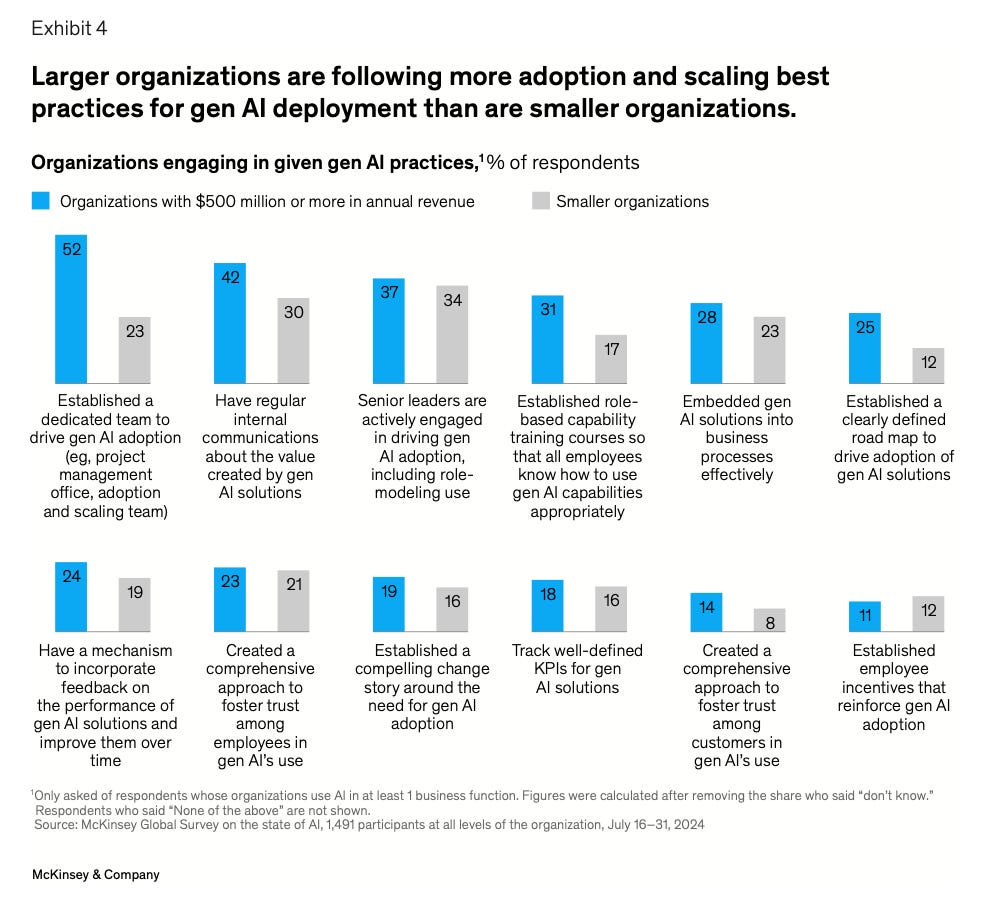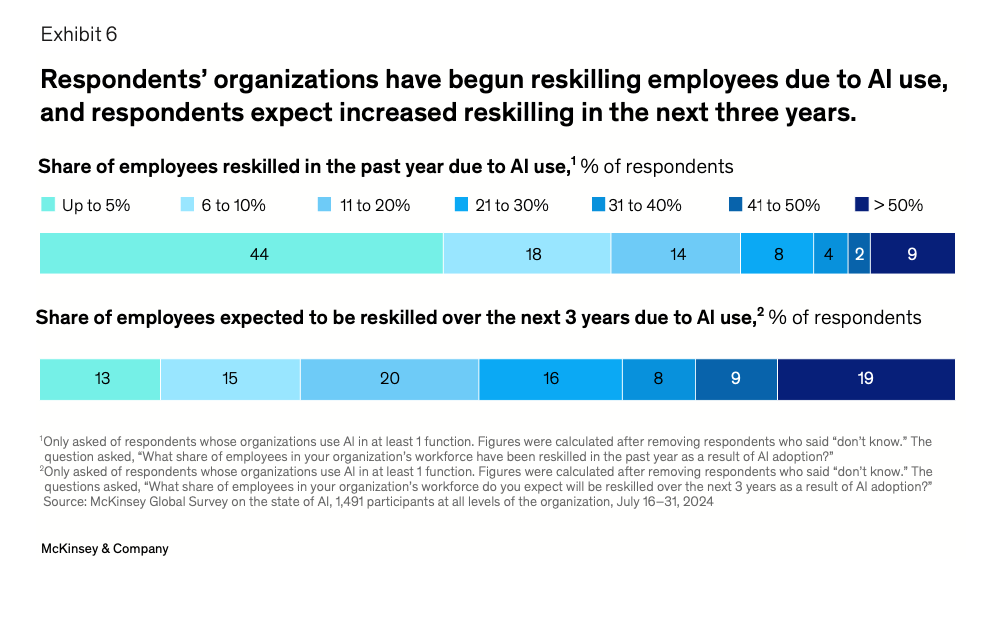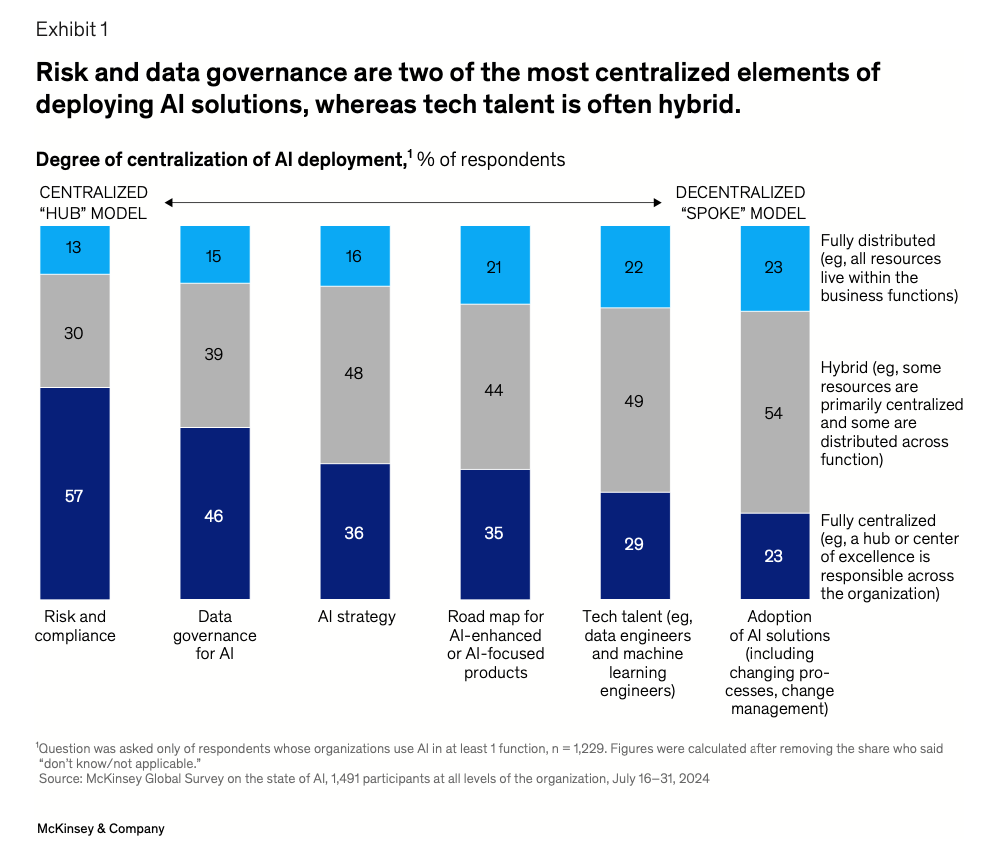In our Great Rewiring series, we explored how businesses need to reimagine their processes around AI rather than simply adding new technology to old workflows.
Well, the latest "State of AI" survey from McKinsey confirms our thesis: fundamentally redesigning workflows is the single biggest factor in whether companies see financial returns from their AI investments. Yet despite this, only 21% of organizations have started to do this.
Let's break down the key findings and what they mean for your business:
1. The AI Implementation Gap
McKinsey identified 12 key adoption practices (identified in the chart) that correlate with positive financial impact from AI.
Among the 12 best practices, tracking well-defined KPIs for gen AI solutions shows the strongest correlation with bottom-line impact. For larger organizations, establishing a clearly defined roadmap for AI adoption is also particularly impactful.
Most organizations are still in early stages - less than one-third of companies follow most of these best practices, and fewer than one in five track specific KPIs for their AI initiatives.
The gap between large and small companies is substantial:
52% of large companies have dedicated teams driving AI adoption (vs. 23% of smaller firms)
42% have regular internal communications about AI value (vs. 30%)
37% have senior leaders actively engaged (vs. 34%)
31% have established role-based capability training (vs. 17%)
25% have created clearly defined roadmaps (vs. 12%)
2. The Coming Reskilling Wave
Organizations have started reskilling their workforce to adapt to AI, but the real wave is yet to come:
Today: 44% of companies have reskilled just a tiny fraction (5% or fewer) of their employees.
Within three years: 19% of employees are expected to be reskilled
This massive shift aligns perfectly with what we've been saying about the need to reimagine work and training, but also about the huge opportunity for more targeted training programs for companies and employees.
3. Finding Balance: How Leading Companies Structure AI Efforts
Just as we found in our Buy vs Build post , successful companies are striking a careful balance between centralized strategy and decentralized execution:
Risk and compliance (57%) and data governance (46%) are most frequently fully centralized, reflecting organizations' need for control over AI risks and data integrity.
AI adoption (23%) and tech talent (29%) are least often fully centralized, with most organizations preferring hybrid approaches that balance central oversight with local implementation.
This pattern makes sense—organizations centralize functions that manage risk and data integrity while distributing implementation to where the work actually happens.
What This Means For You
Despite the progress, most organizations still report no company-wide financial impact from generative AI. We're clearly in the early stages, but the path to success is becoming clearer:
Reimagine, Don't Retrofit: Don't just add AI to existing processes – rebuild workflows around what AI does best.
Make AI a Leadership Priority: When CEOs get directly involved, AI initiatives succeed. This isn't an IT project – it's a business transformation.
Measure What Matters: Define clear KPIs for your AI initiatives. Without measurement, you can't improve or demonstrate value.
Start Reskilling: Your AI strategy needs a parallel talent and training strategy.
The biggest winners aren't those who adopt AI first, but those who reorganize their operations to fully leverage the technology's capabilities.






